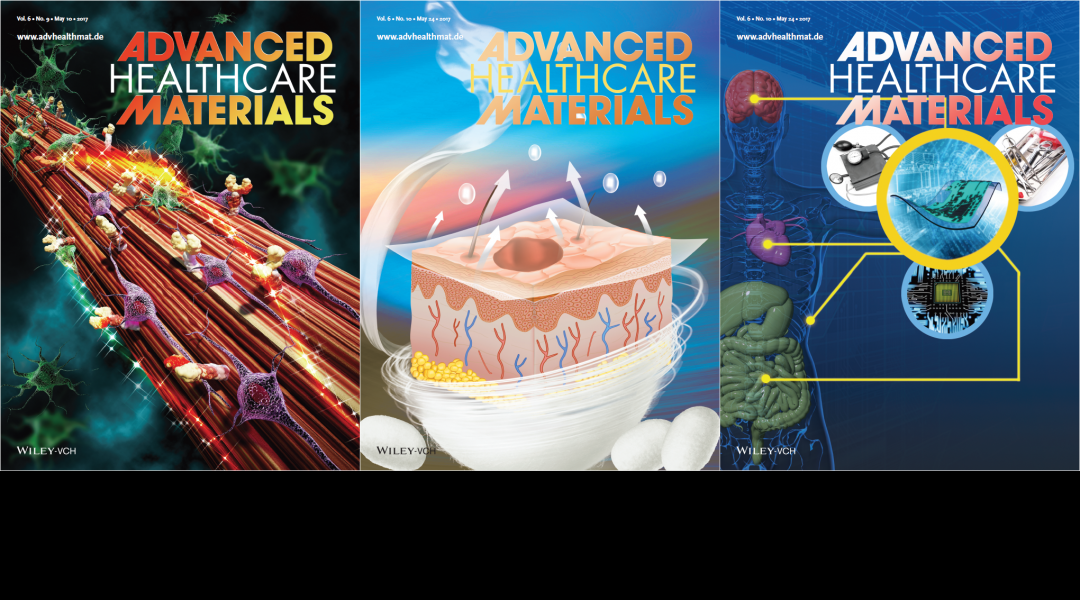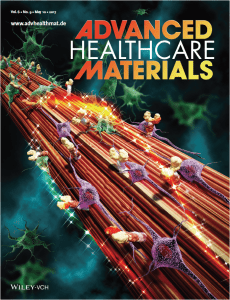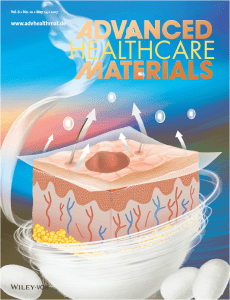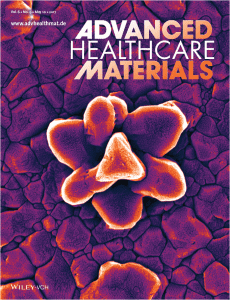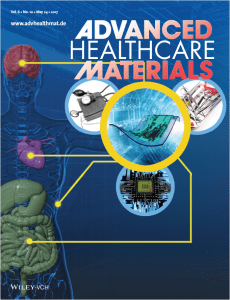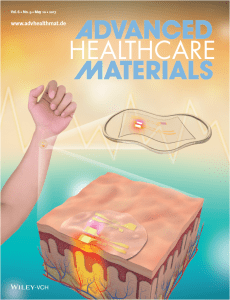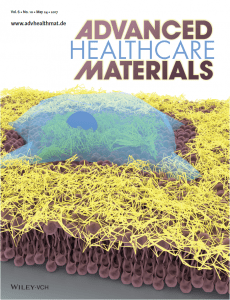Advanced Healthcare Materials celebrates its 5th birthday this year! Since 2012 we have been bringing you the latest breakthroughs in biomedical materials science with a strong focus on improving human health, and we will continue to do so in 2017. Read more about this in our latest editorial.
No access to our published content yet? Make sure to recommend Advanced Healthcare Materials to your librarian. More information can be found here.
In this monthly feature, we highlight the artwork on the covers of both issues of Advanced Healthcare Materials, and of course the research behind it. You can find this month’s issues here and here. Click on the headers below to get to the corresponding papers. Also check out our previous monthly top-downloaded papers feature here.
Jianwu Dai and co-workers at the Chinese Academy of Sciences in both Suzhou and Beijing fabricated a dual functional collagen scaffold tethered with a collagen-binding epidermal growth factor receptor antibody. This scaffold can simultaneously attract neural stem cells and promote their neuronal differentiation after spinal cord injury by specifically binding to receptor molecules expressed on the stem cells and attenuating the receptor signaling, which is responsible for the inhibition of differentiation of the stem cells toward neurons.
Silk fibroin is a natural protein derived from Bombyx mori cocoons, and shows potential in tissue repair applications due to its excellent biomedical properties. The silk fibroin film, developed by Xiaohui Zou, Hongwei Ouyang and co-workers from Zhejiang University in Hangzhou, China is a highly transparent, biocompatible, air-permeable, waterproof and bacterial-barrier scaffold. It significantly reduces the time to wound healing and incidence of adverse events compared to commercial dressings.
A more extensive news article about this study can be found here.
Gianni Ciofani, Giada Graziana Genti and co-workers at the Istituto Italiano di Tecnologia in Pisa describe the most recent and exciting developments related to the field of nanomedicine that relies on the control of cell functions through physical remote manipulation, mediated by smart nanoparticles. For instance, piezoelectric materials with micrometric and nanometric surface structuring provide smart interfaces to actively tune biological environment responses towards a favorite phenotype. In the cover image, high-pressure hydrothermal conversion of corrugated titanium dioxide into barium titanate produces repeated microstructures, mimicking the Phalaenopsis genus morphology, and working as anchoring points for neurons and active sites for voltage-gated calcium channel opening under mechanical stimulation.
Hao Wu, Wei Gao and Zhouping Yin from Huazhong University of Science and Technology in Wuhan, China and University of California, Berkeley analyzed recent key research achievements in soft bioelectronics-enabled precision therapy, with an emphasis on drug delivery, therapeutic and surgical mechanisms and tools enabled by integrated systems. They also highlight the exciting prospects of this potentially new therapeutic modality, and provide an outlook on its opportunities and challenges in commercialization.
Xue Feng and co-workers from Tsinghua University in Beijing report a systematic strategy to design an epidermal inorganic optoelectronic device by using a specific strain isolation design, nanodiamond thinning and hybrid transfer printing. This device has similar mechanical properties to the epidermis, is totally conformal to skin, and keeps constant light transmission between the emitting element and the photodetector, as well as signal stability due to skin deformation. It is also utilized to quantitatively detect human peripheral capillary oxygen saturation and cardiac pulse rate in in vitro experiments. This strategy opens a route for traditional inorganic optoelectronics to achieve flexibility and stretchability, and improve the performance of optoelectronics for biomedical applications.
Naam-Joon Cho and co-workers from Nanyang Technological University in Singapore developed a mechanically tunable substrate for cell adhesion studies. Single-cell adhesion on extracellular matrix protein-functionalized lipid bilayers is depicted to introduce a new method to evaluate cell-substrate interactions on low-rigidity substrates, which closely mimic the physiological environment. In this particular case, a unique reorganization of the extracellular matrix protein is characterized with cell adhesion on the experimental platform.

